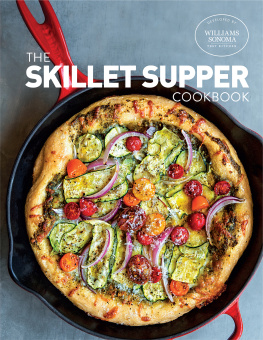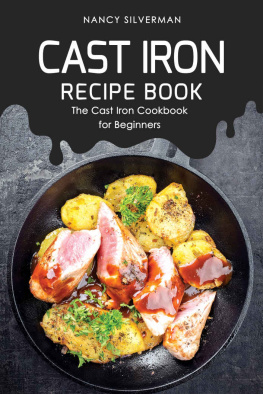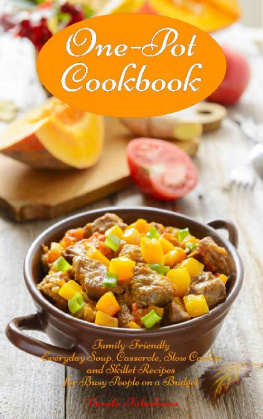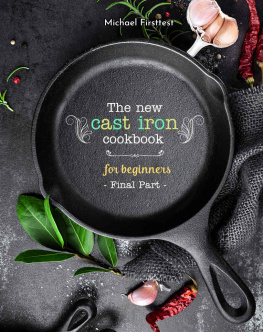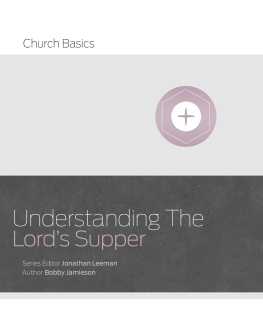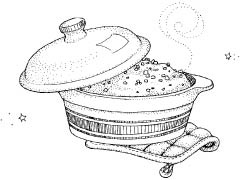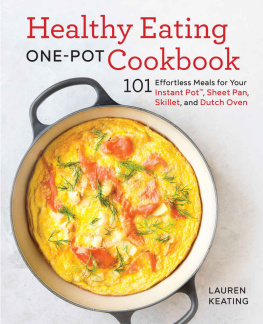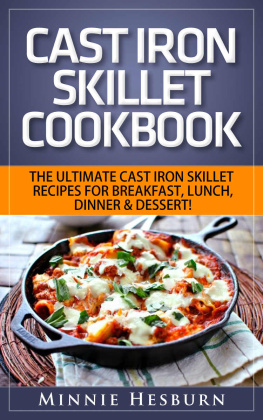THE MIGHTY SKILLET
Essential to any well-stocked kitchen, skillets are endlessly
versatile pieces of cookware that youll turn to again and
again. Reliable, durable, and easy to clean, these multitaskers
yield superb results whether youre frying, sauting, roasting,
braising, or baking. In the Williams-Sonoma Test Kitchen,
where we develop hundreds of recipes every year, we reach
for our skillets frequently to prepare a wide variety of dishes
from steak and salmon to eggs, pizza, and grilled cheese
sandwiches. Skillets are also perfect for one-dish meals.
On the following pages, youll find more than 20 delicious
skillet-cooked recipes that are ideal for many occasions.
Pair the Frittata with Chard, Sausage & Feta () with
a salad for an easy Sunday supper. For movie night, go with
an updated classicGrilled Cheese with Bacon, Avocado
& Spinach ()or serve up tasty Chicken & Cheese
Enchiladas (). Weeknights, try Soy-Ginger Glazed
Salmon with Broccolini (), Korean Chicken Fajitas
(), or Maple-Rosemary Pork Tenderloin with Smashed
Potatoes (). For entertaining guests, Steak au Poivre
with Red Wine & Mushroom Pan Sauce () is perfect.
And for a fun family-night supper, make Pesto Pizza with
Zucchini & Cherry Tomatoes (). Whatever recipe you
choose, your skillet will be your go-to pan for excellent meals.
SKILLET PRIMER
A skillet is a broad pan with a flat bottom and sides that flare out, making it easy
to turn and toss food and to slide it out of the pan. Skillets come in a range of sizes
(typically from 7 to 12 inches) and materials, including stainless-steel, cast iron,
nonstick, and copper. Its useful to have several skillets on handone small, one
medium, and one large. If you buy only two skillets, make one of them nonstick.
Skillets can come with lids, which are handy for covered cooking. Properly cared for,
a high-quality skillet will last a lifetime and provide consistently outstanding results.
STAINLESS-STEEL SKILLETS
Stainless steel is extremely durable and
attractive. Easy to clean, stainless-steel
skillets are an invaluable and long-lasting
addition to any kitchen. When bonded
with aluminum or copper, stainless steel
distributes heat evenly and works on
any stove top, including induction. Most
stainless-steel skillets are also safe to
use in a broiler. While stainless-steel pans
are dishwasher safe, most manufacturers
recommend washing them by hand using
warm, soapy water.
CAST-IRON SKILLETS
Generations
of cooks have used cast-iron skillets to
prepare everything from bacon to biscuits,
and well-seasoned heirloom pans are
often handed down in families. You can
cook almost anything in a cast-iron skillet,
although some manufacturers recommend
that you avoid cooking acidic ingredients
in a new cast-iron pan because they will
react with the material, affecting the flavor
and color of the food. (Once the pan is well
seasoned, its fine to cook acidic foods in
it.) Cast-iron skillets heat evenly and work
on any stove top, including induction, and
can go from oven to table for convenient
serving. Wash cast-iron skillets by hand.
Enameled cast-iron skillets are a stylish
alternative to traditional cast-iron skillets.
Theyre available in a range of vibrant
colors including red, green, orange, and
blue and, like traditional cast-iron skillets,
can go from oven to table, making them an
attractive tabletop showpiece. Enameled
cast-iron skillets do not require seasoning
and will not react with acidic food. They are
dishwasher safe, but washing them by hand
is usually recommended.
NONSTICK SKILLETS
A skillet with
a nonstick coating releases foods easily
and cleanly, making the pan easier to wash
after cooking. When youre cooking with
a nonstick skillet, be sure to use a rubber
spatula or a wooden spoon so you dont
scratch the surface. Nonstick skillets are
excellent for gas and electric stove tops,
but not all nonstick skillets are suitable for
induction stove tops, so be sure to check the
manufacturers product information for your
skillet before using it on an induction range.
Like cast-iron skillets, nonstick skillets
should be washed by hand.
COPPER SKILLETS
Copper is an
excellent conductor of heat, and copper
skillets work on any stove top, including
induction. Coppers lustrous appearance
makes it a favorite in many kitchens, but
it requires more care and maintenance
than stainless steelit scratches easily
and needs regular polishing to maintain its
luster. Wash copper skillets by hand.
CARING FOR Your SKILLETS
To prevent skillets from warping, never place a hot pan under cold water.
Allow the pan to cool completely before cleaning. To prevent spotting, rinse
the pan in hot water and dry immediately.
Hand wash a new cast-iron skillet before its first use and dry immediately.
Rub the pan with a light coat of vegetable oil after every wash. (Enameled
cast-iron skillets do not need to be seasoned.)
If youre using a cast-iron skillet as a serving dish, be sure to protect your
tabletop by setting the hot skillet on a trivet.
Avoid using a new cast-iron skillet to cook acidic foods, such as tomatoes
and some sauces; they can damage the pans seasoning. Once the
seasoning is well established, its fine to cook acidic foods in the skillet.
To maintain a copper skillets lustrous appearance, polish
it regularly using a good-quality copper cleaner.
Preheat the oven to 450F.
In a small bowl, stir together the butter,
teaspoon
pepper, the paprika, cumin, and coriander until well
blended. Pat the chicken dry and rub the seasoned
butter evenly on the outside of the chicken. Season
generously with salt.
In a large bowl, toss together the potatoes, carrots,
shallots, and oil, and season generously with salt and
pepper. Transfer the vegetables to a large ovenproof
skillet and spread in a single layer. Place the chicken
on top of the vegetables.
Reduce the oven temperature to 400F and transfer
the skillet to the oven. Roast until an instant-read
thermometer inserted into the thickest part of the thigh,
away from the bone, registers 165F, 5065 minutes.
Transfer the chicken to a cutting board, cover loosely
with aluminum foil, and let rest for 1015 minutes before
carving. Insert a small, sharp knife into the potatoes;

